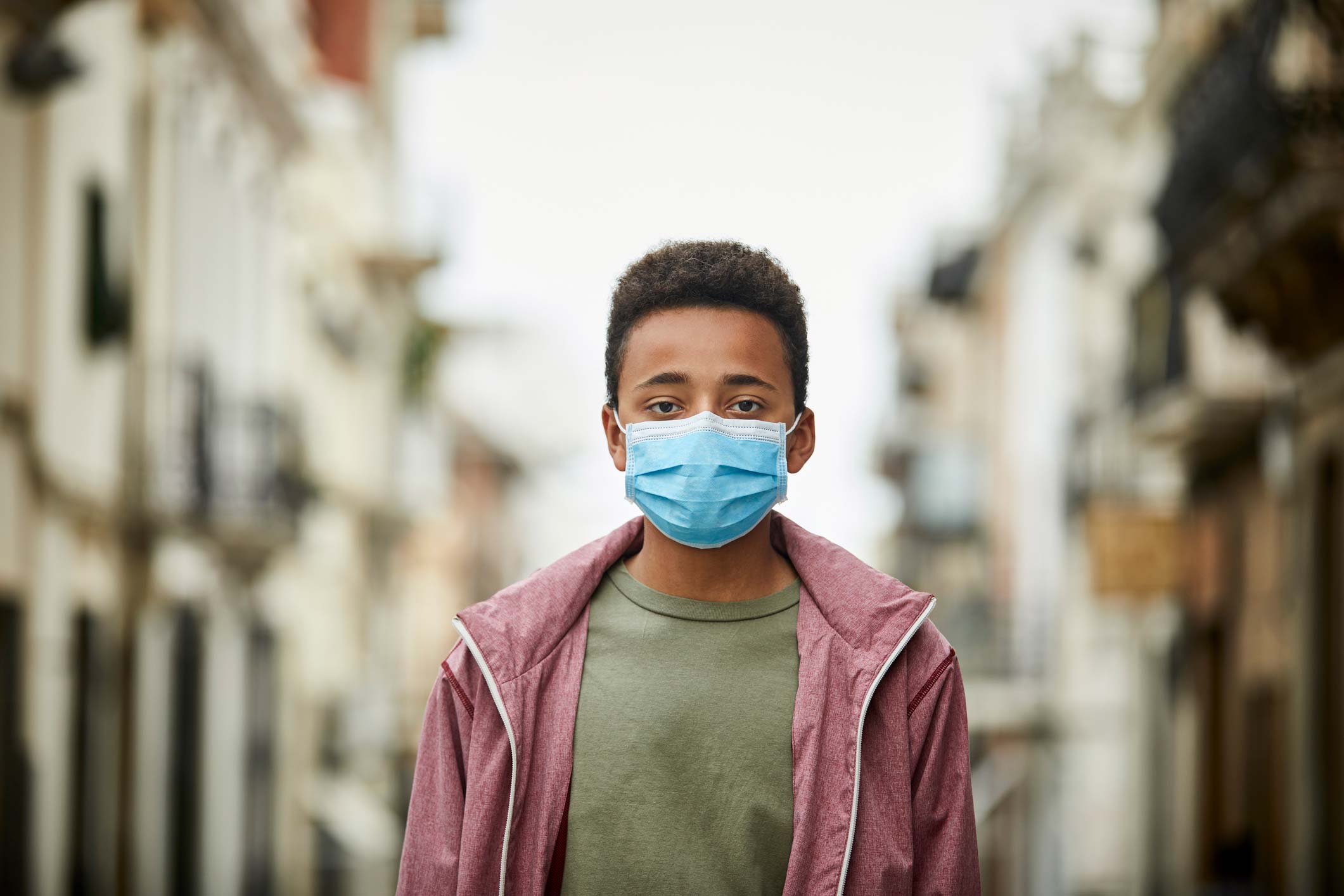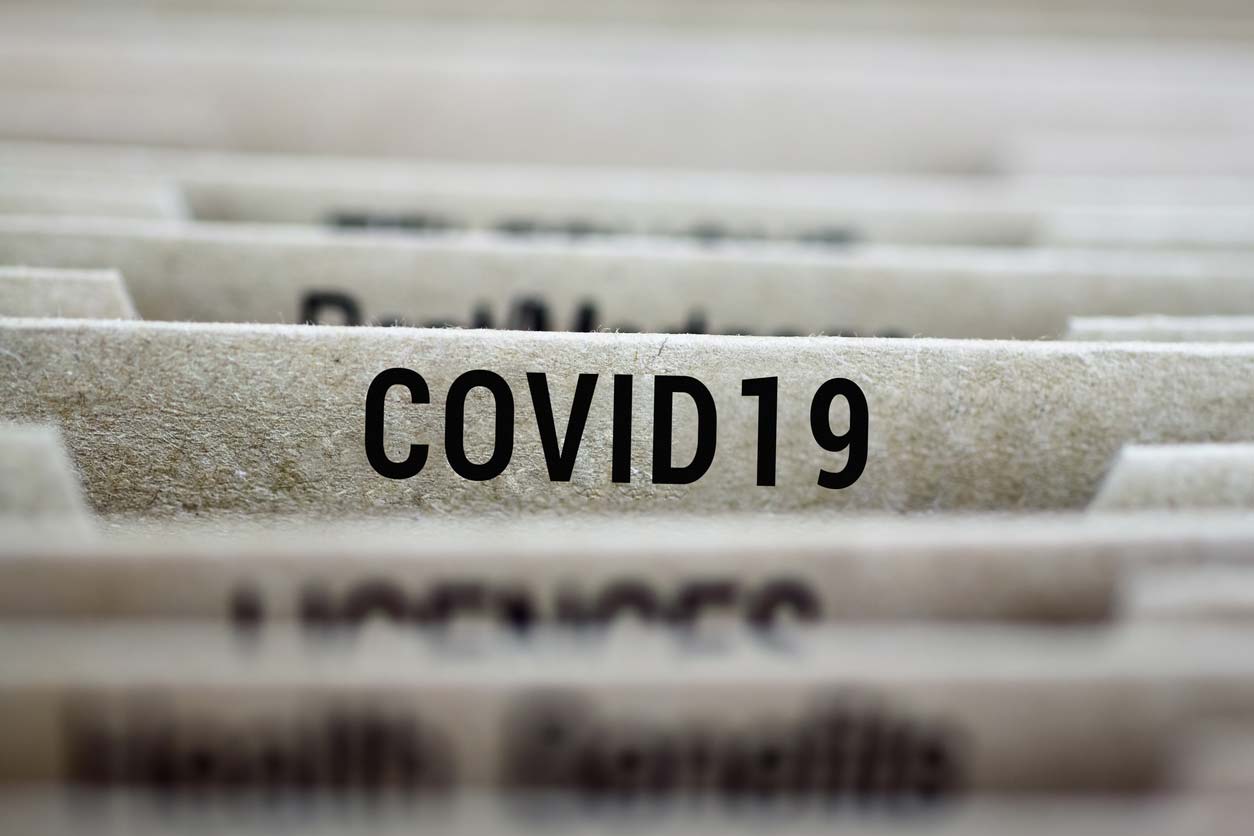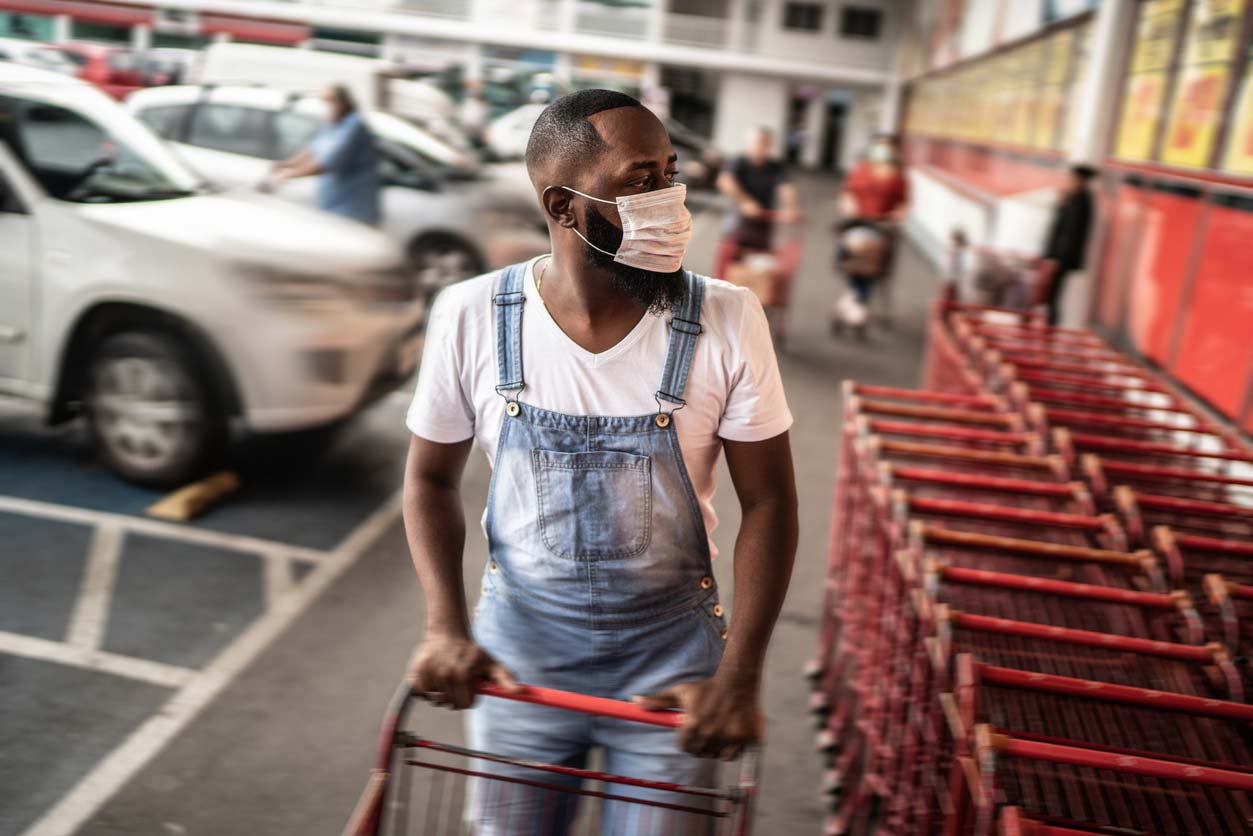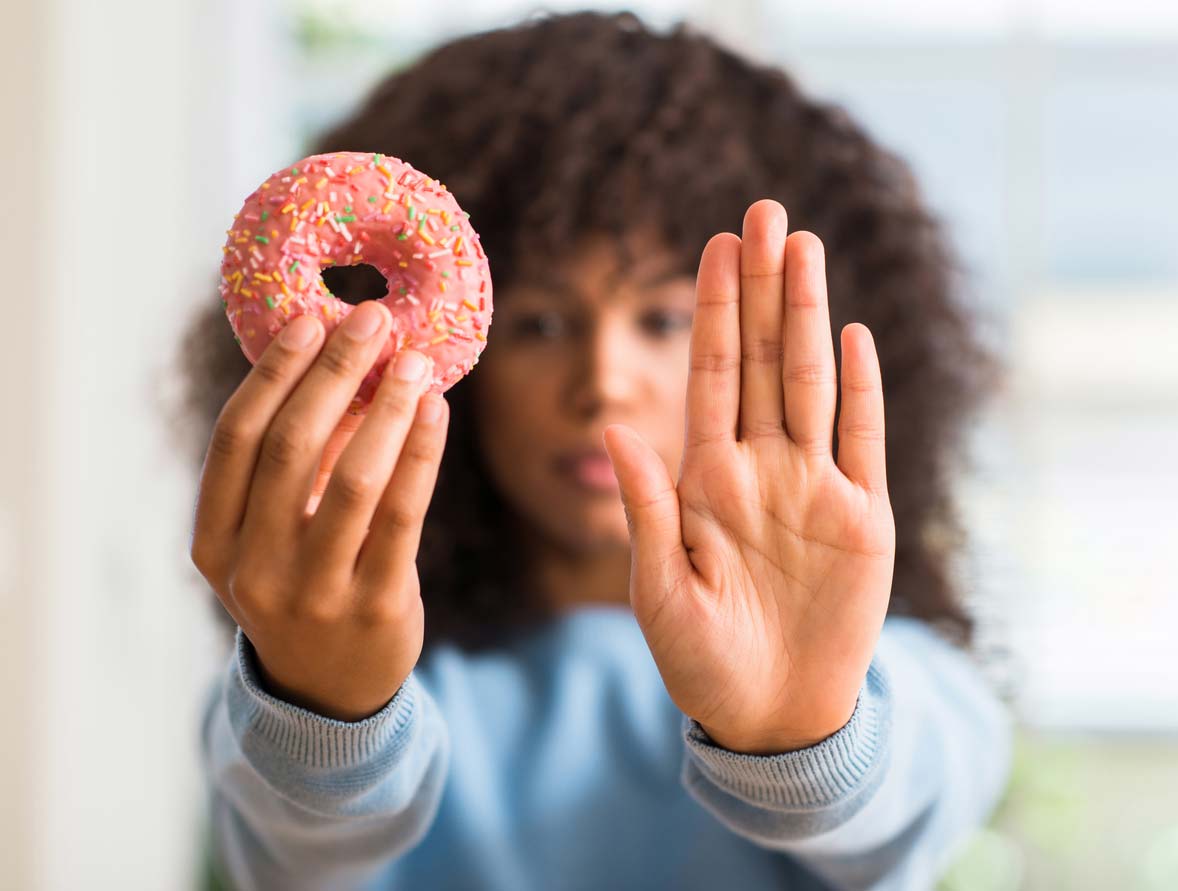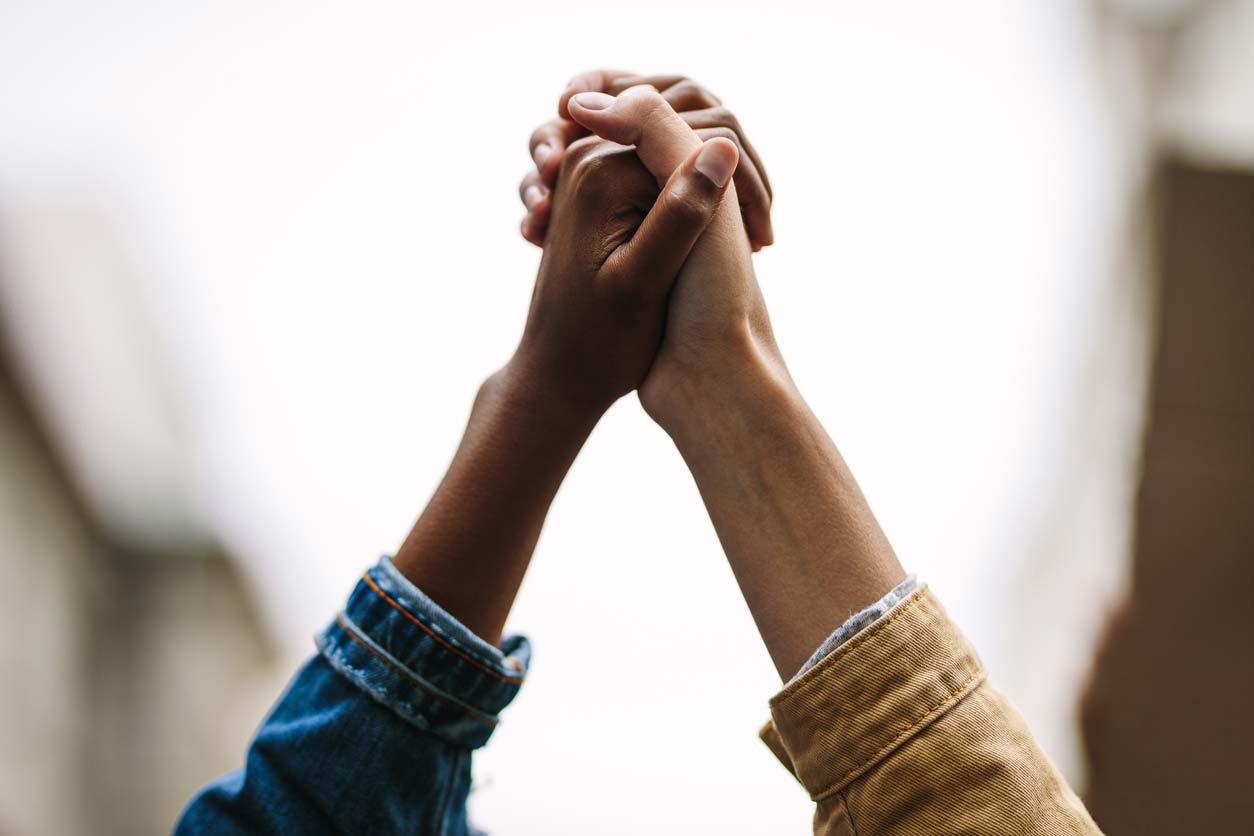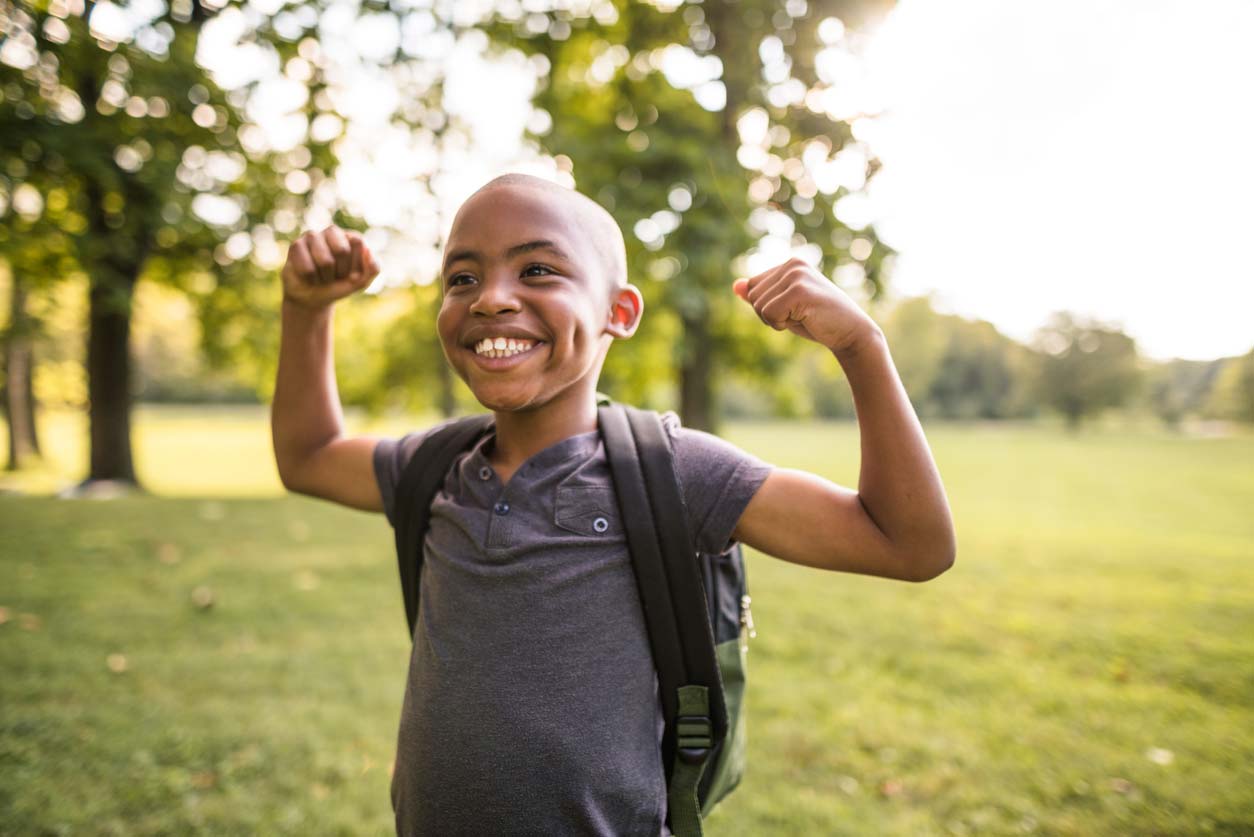It’s been called “the ultimate COVID-19 mystery.” Why do some people die from the coronavirus, while others seem barely touched by it? Who is likely to die from COVID-19, and who is likely to be spared?
These are critically important questions, for many reasons. People need to know their risk level in order to assess what level of precaution they need to take. Physicians need this information to know which patients are most vulnerable and to guide their treatment approach for specific patients. And public health officials need to understand the answers to these questions, so they can advocate for public policies that will spare lives and suffering, while causing the least amount of economic hardship.
Yet even now, at a time when the novel coronavirus has already killed more than 135,000 Americans and infected more than three million; at a time when globally, the pandemic has killed more than half a million people and infected more than 10 million, scientists are still trying to understand why there’s such wide health inequality. Some people get severely ill and die, while others seem to have no problem at all.
COVID-19 Research Is Still Inconclusive
Knowing that the virus mutates, some scientists are studying whether distinct strains of the coronavirus emerged that might cause more harm than other strains. Other scientists are examining whether a person’s blood type could significantly differentiate the severity of the illness. And still others are looking at whether people who’ve had recent exposure to other coronaviruses might be partially protected.
But so far, these and other lines of inquiry have not produced the hoped-for clarity. Efforts to determine if different strains of the virus are more transmissible or lethal have yielded only ambiguous results.
European scientists studying respiratory failure in COVID-19 patients in Italy and Spain did find that patients with Type A blood had a 50% higher risk of needing oxygen or a ventilator. While those with Type O blood tended to have less severe cases. But those findings are tentative and are yet to have peer-review. It’s possible that people who have previously experienced significant viral infections or had other coronaviruses may have less severe reactions. But to this point, the unhappy fact is that many valiant researchers have yielded explanations that are mostly partial, conjectural, and ambivalent. We still have a lot to learn about this virus and the harm it causes.
What We Do Know About COVID-19 Risk & Outcomes
We know that older people and men, specifically, fare worse, as do those with underlying health problems (sometimes called “comorbidities”). And we know that people who are obese fare particularly poorly. Some studies found that patients with a body mass index between 30 and 34 (who are obese under CDC definitions) were twice as likely to be admitted to the ICU than patients with a BMI under 30. And those with a BMI above 34 were three times more likely to die than those with a healthy BMI.
And it’s not just obesity. Those who have hypertension, type 2 diabetes, lung disease, heart disease, and other chronic conditions also have a substantially higher risk for bad outcomes.
How much higher?
A CDC report from June 14, 2020, analyzed data from more than 1.7 million US cases of COVID-19 — and more than 103,000 deaths. People with underlying medical conditions, such as heart disease and diabetes, were hospitalized six times as often and died 12 times as often as those without these underlying conditions.
But when it comes to looking at the odds, the good news is that there’s a lot we can do to protect ourselves with a healthy diet and lifestyle. At least, if we have access to healthy food. Which sadly, not everybody does.
Two Deadly Pandemics Converge
Right now, we are beset by two seemingly disparate crises: the coronavirus pandemic and the suffering of ongoing racial injustice, which has recently come into greater worldwide visibility.
Is it a mere coincidence that these two realities have emerged with so much intensity and consequence right now? Or is there an important connection between these two emergencies? Could they both be telling us that we are at a choice point and that there are difficult and important decisions for us to make? And is there a link between the SARS-CoV-2 virus and racism that we need to understand if we are going to respond effectively to either crisis?
Racial Inequality Among COVID-19 Outcomes
Nearly 90% of the New Yorkers and Chicagoans who have died of COVID-19 suffered from obesity or other underlying chronic conditions. But obesity and the other underlying conditions that bode poorly with the coronavirus don’t affect everyone equally. They’re far more prevalent among people of color. In the US, people of color, and particularly Black people, are more likely to get COVID-19, more likely to have it worse, more likely to suffer the most, and more likely to die from it.
Why?
Currently, in our society, people who are white are more likely to be financially stable. Not that all white people are monetarily well off, of course. Not by a long shot. But statistically, the odds are in their favor.
People who are white and have enough money, enjoy a number of advantages that lead to better health. Typically, they can afford better diets. White people have access to more nutritious food and information about which foods are, in fact, healthier to eat. They have better housing and safer working conditions. There’s more green space and areas for recreation — and more opportunities to exercise regularly where they live. They have more access to health care services. And the health care they receive is better. And, in general, white people are less exposed to pollution and tend to breathe cleaner air. This is an enormous advantage, as new studies keep finding a remarkably strong association between chronic exposure to air pollution and higher COVID-19 death rates.
And white people do not have to endure the array of health depleting stresses that racism places on almost all people of color, regardless of income or social status.
Racism Transcends Class
Senator Cory Booker is a Stanford graduate who was the president of his class, a Rhodes scholar, and is a Yale University-trained lawyer. He is an influential, highly educated, and successful man. Yet as a Black man, police accused him of stealing his own car. And he has repeatedly feared for his life at the hands of police officers.
Tim Scott of South Carolina joined the US Senate in 2013. Yet, repeatedly he’s stopped and searched by Secret Service and other security personnel when entering the US Capitol building, something that does not happen to white Senators. While driving, police stopped Senator Scott seven times in a single year while he was already a Senator. “The vast majority of the time,” he says, the police had their hands on their guns, even though he “was pulled over for driving a new car in the wrong neighborhood or something else just as trivial.”
If that can happen to US Senators, who represent millions of people and regularly appear on national television, what happens to Black people who are not wealthy or famous? How often are they denied loans, jobs, promotions, housing, or respect? How often are they subjected to insults, stares, slurs, and worse? Do these repeated affronts to their dignity and opportunity also take a toll on their health?
Studies show that discrimination doesn’t just make it harder to succeed in life, but it can also lead to a disruption in the stress hormone cortisol, leaving people with more fatigue, deeper self-doubt, and, therefore, more prone to disease.
Racial and Health Inequality
The health disparities that exist between white and Black populations in the US are also well documented. It’s indisputable that Black people are far more likely than white people to die from cancer, suffer from depression, be obese, have high blood pressure, and suffer from type 2 diabetes and heart disease. It’s undeniable that Black mothers are more likely to die in childbirth, and that Black babies are more likely to die before their first birthday.
But just as the murder of George Floyd has prompted a reckoning over racism and police brutality, could COVID-19 also mark a turning point? Could it help us to finally see the painful health inequalities that most Black people in the US have had to endure for far too long?
It is irrefutable that Black Americans are now dying from the coronavirus at nearly three times the rate of white Americans. People of color, and particularly Blacks, have higher rates of infection. And if they become infected, they are more likely to die.
The CDC reports that African Americans, who comprise 13% of the US population, account for 33% of COVID-19 hospitalizations — and an even higher percentage of the deaths from the disease. There are many reasons for this, including less access to proper health care, more exposure to air pollution, and more exposure to the virus on the job. But the biggest contributor is that Black people have such high rates of chronic health conditions that weaken the immune system and cause increased vulnerability to the virus.
There is still plenty we don’t know about COVID-19, but one fact is inescapable: African Americans and other people of color are disproportionately represented among the dead.
On their death certificates, it’s written that the cause of death is COVID-19. But is it possible that racial discrimination, with all the challenges and disadvantages that our society systematically imposes on Black people, was a factor in their death, too?
What About Personal Responsibility?
Hearing about this, some people have pointed the finger at people of color.
When asked about the disparity between the rate at which Black and brown Americans are contracting COVID-19 as opposed to other racial groups, US Surgeon General Jerome Adams said, “African-Americans and Latinos should avoid alcohol, drugs, and tobacco,” even though these groups don’t abuse these substances at higher rates than others.
And speaking during a CNN town hall about the disproportionate impact COVID-19 is having on people of color, the former basketball star Charles Barkley said, “There is systematic racism, but that does not give you a reason to be overweight.”
Of course, there’s a grain of truth in what Dr. Adams and Mr. Barkley are saying. Each of us is responsible for the choices that we make. And we need to do the best we can with what life brings us. But what people like Jerome Adams and Charles Barkley completely miss is that without access to affordable, healthy foods, it is extremely difficult to maintain a healthy weight and a strong immune system.
It’s Not a Coincidence
Much of the outrage about the murder of George Floyd is because people know it was not just a coincidence that Mr. Floyd was Black.
Might it be possible now for us to also see that it’s not a coincidence that people of color, and Black people, in particular, have much higher rates of the underlying health problems that bode so poorly for people who become infected with COVID-19?
Before the coronavirus, Black people in the US were already far more likely to be without employment. And if they were employed, to have lower wages. Although there were, of course, exceptions, the vast majority of Black people were already financially challenged. They already had lower incomes, far less savings to fall back on, and much higher poverty rates than their white counterparts. Now, all these economic disparities have intensified even more because of the coronavirus.
When people are financially stressed, they are far more likely to also face “food insecurity,” which adds hugely to the stress that saps their energy and degrades their immune system. And they are more often forced to eat diets that come from the cheapest available calories. That usually means greasy fast-food and highly processed junk foods.
Have you ever wondered why it is that the cheapest calories always seem to come from the least healthy foods?
There’s nothing about processing Mother Nature’s bounty in a factory, stripping it of its fiber, vitamins, and minerals, packaging it in plastic, shipping it thousands of miles, and spending millions of dollars advertising it, that inherently lowers its price. Rather, it’s our perverse government subsidies that are artificially driving down the price of the least healthy foods.
Poor Health is Subsidized
No doubt, you know that we all need to eat more fresh fruits and vegetables. But less than 1% of farm subsidies today support the research, production, or marketing of these healthy foods. What foods and what crops, then, are we subsidizing? Primarily, the mass production of gargantuan amounts of corn, soy, and wheat.
These highly subsidized crops have two primary uses in the American diet: as animal feed in factory farms, which brings down the price of industrial meat; and as ingredients in highly processed and nutrient-poor junk foods. This brings down the price of food-like products that are nutritionally horrendous, leading to skyrocketing medical costs, and that today, are making the people who eat them more likely to die from COVID-19.
These subsidies are the primary reason why, over the last four decades, the price of processed foods and industrial meat has gone down 20-30%, while the price of fruits and vegetables has increased 40%.
And they are one of the reasons why there are such glaring health disparities and deaths from COVID-19 among Black people and other people of color.
When we create a society in which cycles of intergenerational poverty persist, and then we subsidize junk food, we create a marketplace discrepancy that essentially condemns the poor to nutritional disasters. And when a vastly disproportionate share of those who struggle financially are Black, we’ve created one of the conditions that, in effect, perpetuates and sustains systematic racism and health inequality.
What We Must Do to Improve Food Equity
At Food Revolution Network, we’re committed to healthy, ethical, and sustainable food for all. We want everyone, not just the wealthy and privileged, to have health equity and access to healthy food. And we know what kinds of policies can help us get there.
As a nation, we could end the subsidies that spend tens of billions of taxpayer dollars in ways that bring down the price of white bread, high fructose corn syrup, and factory-farmed animal products — the very foods that every credible health authority is telling us we should be eating less of. If we’re going to subsidize anything, we should subsidize fruits, vegetables, nuts, seeds, and legumes — the foods that tens of thousands of medical studies tell us we should be eating more of.
We could also ban the practice of fast-food and junk food companies targeting Black, Hispanic, and Latinx consumers with marketing for their least nutritious products — primarily fast-food, candy, sugary drinks, and processed snacks. And we could ban alcohol and tobacco companies, too, from deliberately targeting communities of color.
We could tax soda pop and other grossly unhealthy foods and beverages. And we could use the revenue to bring down the cost of fruits and vegetables.
We could expand incentive programs like Fair Food Network’s Double Up Food Bucks program that doubles the value of Supplemental Nutrition Assistance Program (or SNAP, also known as Food Stamps) benefits when used on fruits and vegetables. This enables people who depend on these benefits to eat more healthful foods, while also supporting local farmers.
Do these kinds of incentive programs, now available in nearly every state, actually work? The non-profit Wholesome Wave found that nationally, 90% of consumers participating in its SNAP incentive program reported either increasing or greatly increasing how many fruits and vegetables they consumed.
Community-Level Support
Communities could invest in food banks and in organizations like Feeding America, which currently provides critical food needs for more than 50 million Americans. With expanded support, these heroic organizations could do more than just meet the caloric needs of their clients – they could provide food that meets their nutritional needs, too.
We could bring better nutrition into school meal programs, which provide essential food for tens of millions of children.
We could support more community gardens, which can provide employment and bring healthy food to low-income communities.
Cities and counties could enact zoning policies restricting the number of fast-food joints in Black neighborhoods and favor places that sell healthier food. (Studies have found that fast-food retailers are more common in Black neighborhoods of all income levels than in low-income, non-Black neighborhoods.)
We could support groups like:
- SÜPRMARKT, an organic grocery that’s bringing more low-cost organic food to low-income communities of color in and around Los Angeles;
- The COVID-19 Fresh Food Fund that aims to provide communities in need with hundreds of thousands of servings of fresh produce; and
- The animal rights group Mercy For Animals, that’s donating and delivering healthy meals from plant-based restaurants to low-income neighborhoods that are predominantly Black.
If we wanted to go further to diminish health inequality (which I hope we do!), we could declare healthy food a basic human right. And we could craft policies that ensure that no one, regardless of their wealth or ethnic background, suffers illnesses that could have been avoided with healthier food.
Building a Healthier Future
Right now, in the United States, the darker a person’s skin color is, the more likely they are to depend on, for the majority of their calories, fast-food and junk food (subsidized by taxpayer dollars!).
But there are changes we can make, and should make, to support all people in having access to affordable, healthy food. In the long run, is it possible that these changes would actually be cost-effective? Might they not only build a healthier society but also build a more prosperous one?
Right now, tens of millions of kids, a disproportionate share of them Black, are growing up without their basic nutrient needs met. If they had access to more fruits and vegetables, and ate less unhealthy foods, their physical and mental health would improve. They could perform better in school, have higher self-esteem, and be less likely to fall victim to pathways of crime, drugs, and violence, while also being more likely to find pathways to a healthy lifestyle and ways they can contribute to building a healthier society. They would be far less likely to become obese, suffer from type 2 diabetes, heart disease, or high blood pressure. And they would not die from the next pandemic at the rate that Black and brown people are dying today from COVID-19.
A Time for Action
We have enormous problems with wealth and health inequality and racism. And it will take a massive and sustained effort to even begin to rectify them. We have normalized an economy that leaves far too many people desperate, left out, diseased, and suffering. And we have normalized a society in which far too many of these people are people of color.
If we are to make a meaningful impact on public health, we need to address the structural systems that keep certain communities marginalized, desperate, sick, and hungry.
If we can do that, we will not only reduce the deaths and suffering from COVID-19, but also from all the other illnesses and problems that stem from an impoverished diet.
Sometimes, all of this can feel overwhelming. It might feel not so much like a drop in the bucket, but like a drop in the sea. It’s hard enough for many of us to make it through the day without worrying about ending racism and uplifting the health of others.
But we are not alone. Every day, more people are becoming morally outraged at racism, fed up with toxic food, and committed to actions against health inequality that can lead to more healing. Every day, we each have choices to make that can make us healthier as individuals — and healthier as a society.
Wherever you come from, and whatever your background, we are all living, now, at a pivotal moment. Each of us has the opportunity to be on the right side of history.
Thank you for being part of this struggle and this effort. It’s a privilege for us to work with you to help build a healthier, safer, and more equitable world.
Editor’s Note: One more factor to consider is Vitamin D, which is critical to immune health. It’s been estimated that in excess of one billion people worldwide have vitamin D deficiency. Very few foods contain vitamin D – it’s synthesized in the skin during exposure to sunlight. Increased skin pigmentation reduces the efficacy of sunlight because melanin functions as a natural sunblock. In addition, aging decreases the ability of the skin to produce vitamin D. So it may be advisable for most people who don’t have significant sun exposure, and especially for people of color and people over 50, to consider a regular Vitamin D3 supplement. Find out more about this and other supplements that healthy eaters may want to take, here.
Tell us in the comments:
- Were you aware of the disparities in food and health regarding race?
- Are there organizations, causes, or strategies that you think could uplift health in the communities that are struggling the most?
- Are you taking, or will you take, any actions to make a difference?
- What gives you hope?
Featured image: iStock.com/Morsa Images
